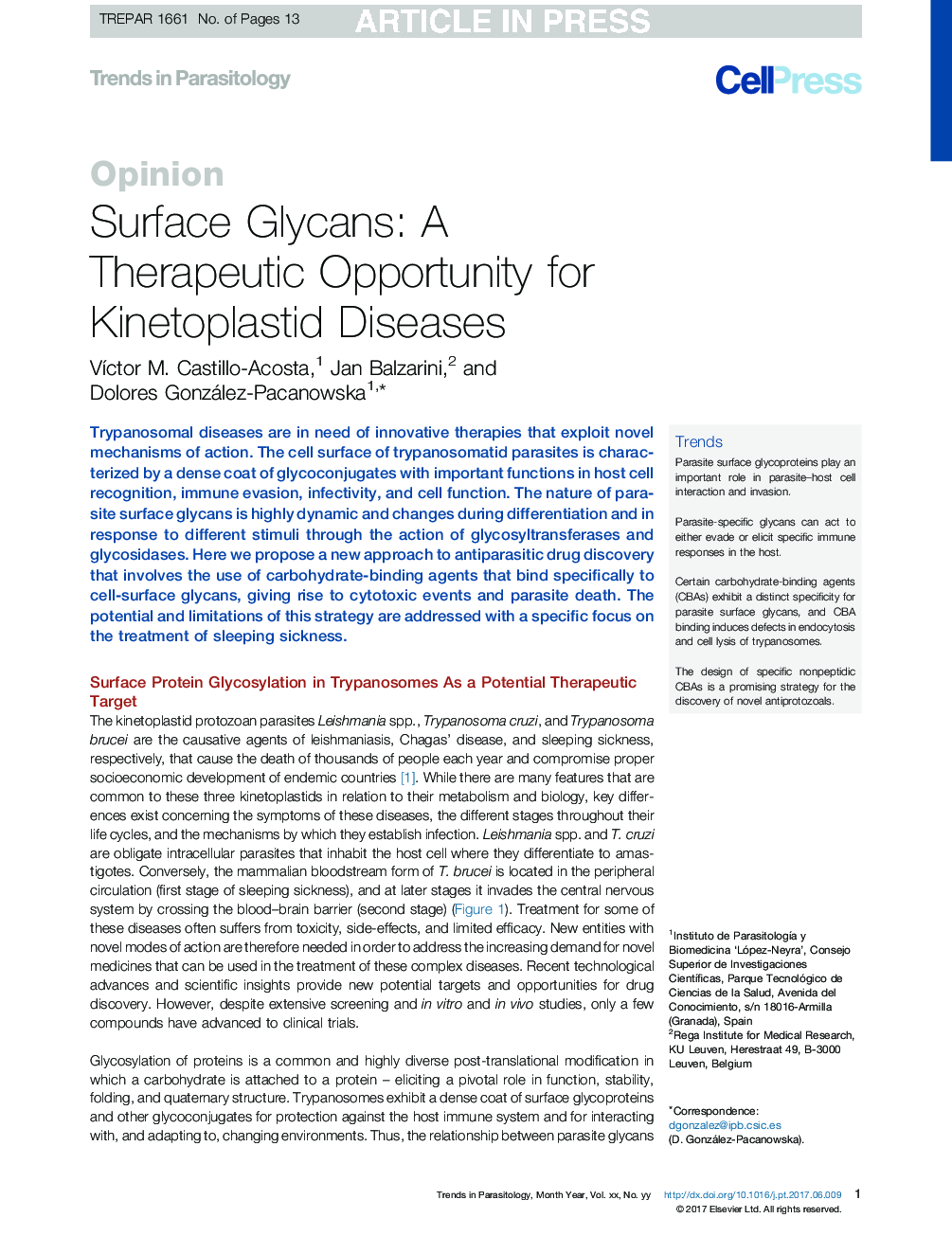| Article ID | Journal | Published Year | Pages | File Type |
|---|---|---|---|---|
| 5674677 | Trends in Parasitology | 2017 | 13 Pages |
Abstract
Trypanosomal diseases are in need of innovative therapies that exploit novel mechanisms of action. The cell surface of trypanosomatid parasites is characterized by a dense coat of glycoconjugates with important functions in host cell recognition, immune evasion, infectivity, and cell function. The nature of parasite surface glycans is highly dynamic and changes during differentiation and in response to different stimuli through the action of glycosyltransferases and glycosidases. Here we propose a new approach to antiparasitic drug discovery that involves the use of carbohydrate-binding agents that bind specifically to cell-surface glycans, giving rise to cytotoxic events and parasite death. The potential and limitations of this strategy are addressed with a specific focus on the treatment of sleeping sickness.
Keywords
Related Topics
Life Sciences
Immunology and Microbiology
Parasitology
Authors
VÃctor M. Castillo-Acosta, Jan Balzarini, Dolores González-Pacanowska,
